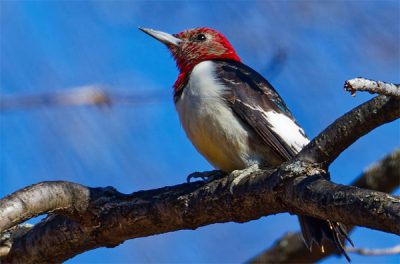eBird is the Word for the Third New York Bird Breeding Atlas
Opinion Advocates for ideas and draws conclusions based on the author/producer’s interpretation of facts and data.

By Brian Kluepfel
Sometimes, we feel powerless to make a dent in the world’s problems, complex and overwhelming as they are.
This year, however, in another bit of Citizen/Community Science, you can make a direct contribution to recording bird populations and breeding data in New York State. All you really need is a mobile phone and an eBird account.
The compilation of the third edition of the New York State Breeding Bird Atlas (NYSBBA) has been underway since 2020, and will finish this year. The first two editions, compiled in 1980 and 2020, respectively, gave us baseline data of species throughout the state and an idea in the shifts over time. Now, with another two decades of perspective, we’ll have the opportunity to learn even more.
Some examples of species that have lost or gained ground in the last atlas include the red-headed woodpecker, one of the state’s most stunning birds. While that one lost ground, the Merlin – the small falcon once known as the “pigeon hawk” – was first recorded nesting in New York only in 1992. (They did not appear at all in the 1980-85 survey.)
It would seem, said NYSBBA coordinator Julie Hart, that based on eBird data their infiltration from north to south continues, even to Long Island, and we’d likely see “drastic changes in their distribution.”
Under the auspices of the state Department of Environmental Conservation (DEC), our rather massive state’s 54,000 square miles has been divided into six regions, which are then further sliced into sectors of nine square miles. Saw Mill River Audubon Executive Director Anne Swaim serves as one of the coordinators for the Hudson Region, along with Wendy Tocci of the John Burroughs Natural History Society of Ulster County.
As technology has shifted rapidly since the turn of the century, this will be the first time that eBird data is used. To be part of NYSBBAIII, just navigate to Settings and Account on your smartphone and set the portal to “ebird,” and then navigate down to the New York State Breeding Bird Atlas.
For those of you who haven’t used eBird before, there are some helpful tutorials at ebird.org/atlasny.
In fact, there has never been greater opportunity for non-scientists to be involved in the collection of avian data. With the traditional Audubon Christmas Counts having just finished, and the pending 27th annual Great Backyard Bird Count this weekend (Feb. 16-19; find out more at www.birdcount.org), birders across the globe are making meaningful contributions to our understanding of the natural world.
Whether your interest be scientific, a school project or just an appreciation of the aesthetic beauty and wide variety of birds around us, your participation matters. And something else? It’s fun.
Brian Kluepfel is a member of Saw Mill River Audubon and a correspondent for the Lonely Planet travel series, Birdwatching magazine and many other publications. He lives and birds in Ossining.

Examiner Media – Keeping you informed with professionally-reported local news, features, and sports coverage.
